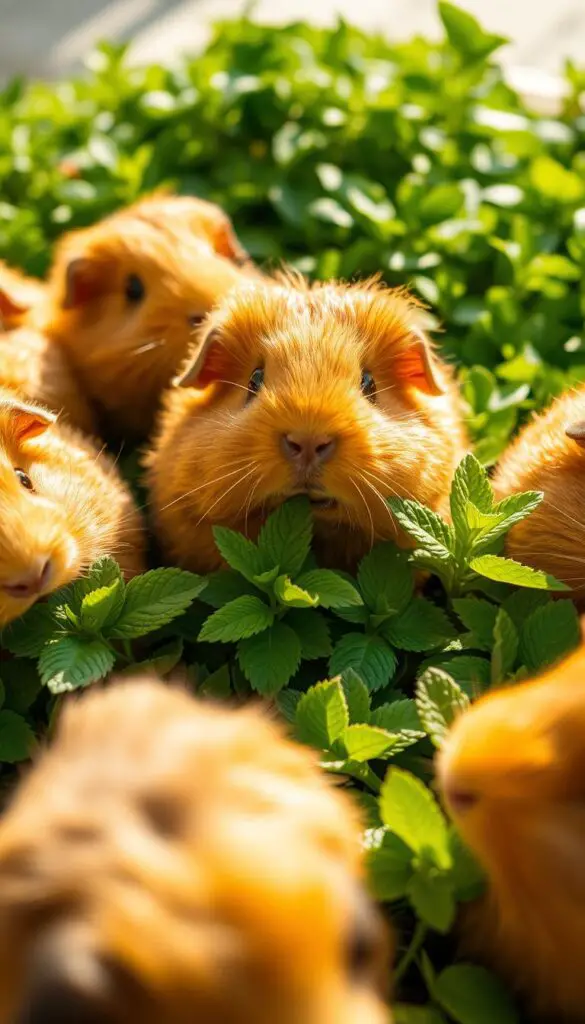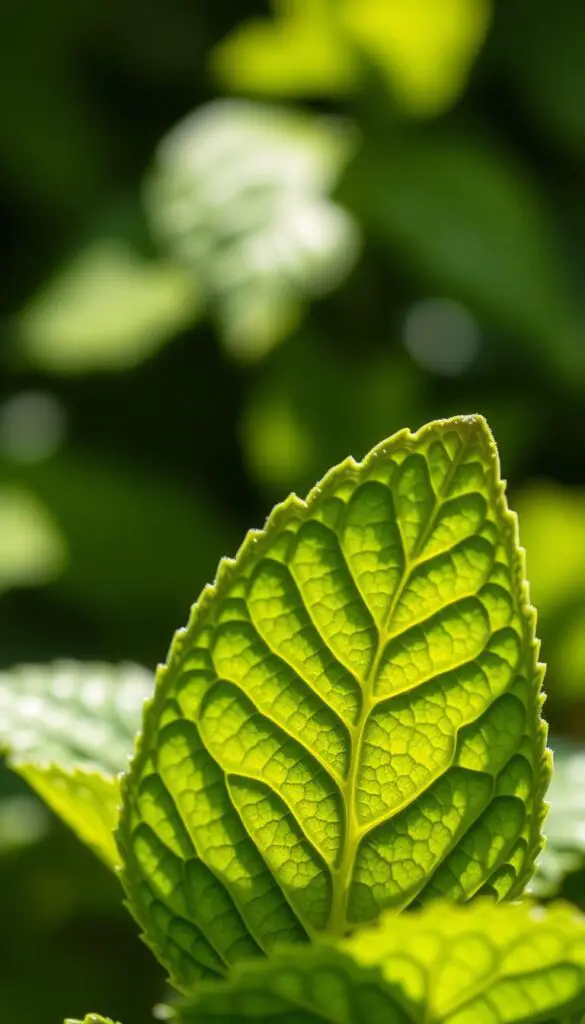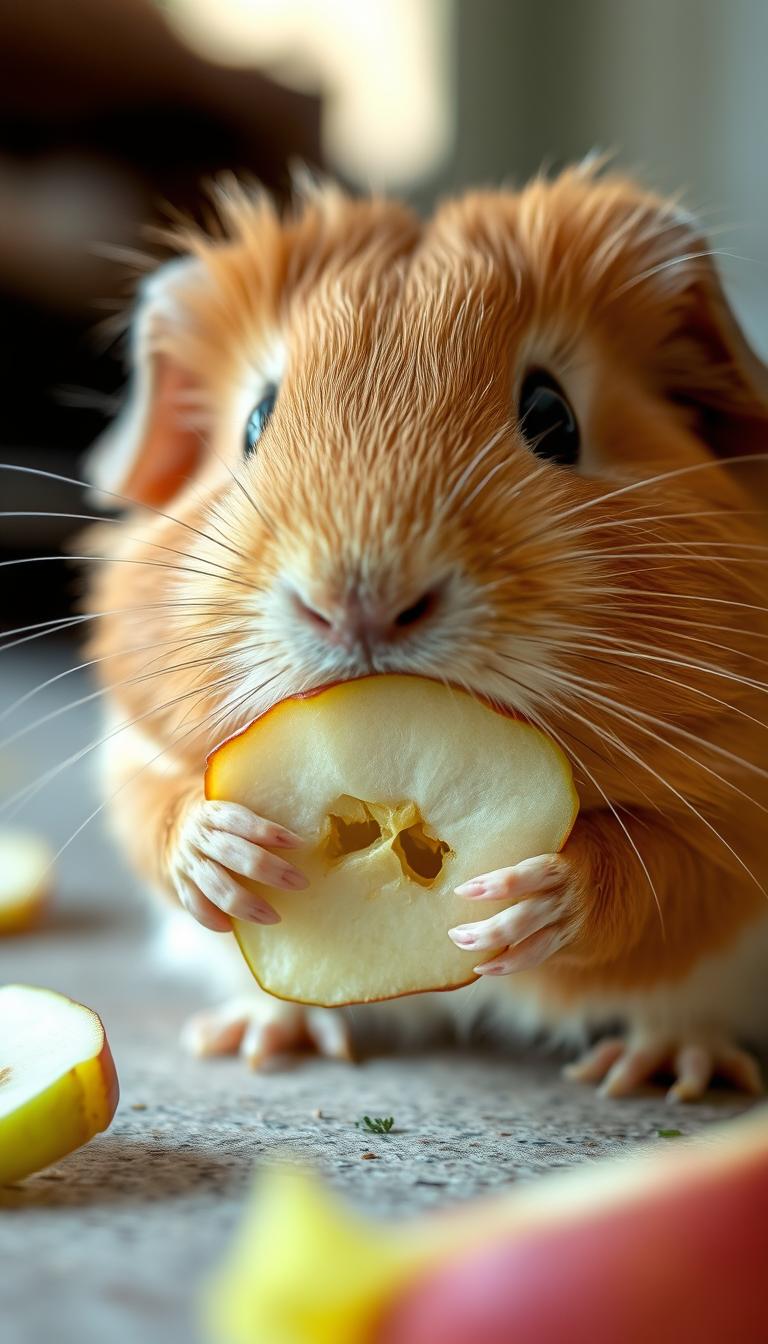Herb-loving pets often surprise owners with their enthusiasm for fresh greens. When it comes to fragrant plants, one particular leafy option stands out as both nutritious and delightfully aromatic. Many small animal enthusiasts wonder about introducing new flavors while prioritizing safety.
This crisp herb offers vitamin C and antioxidants, supporting overall health. Moderation remains key—two weekly servings provide variety without overwhelming delicate digestive systems. Fresh leaves washed thoroughly ensure your pet enjoys only the best quality.
Watch those whiskers twitch with excitement during mealtime! Most small herbivores show immediate interest in this plant’s refreshing taste. Rotate it with other approved greens to maintain dietary balance and prevent boredom.
Start with small portions to observe how your companion reacts. Remove uneaten pieces promptly to keep their habitat clean. Pair this treat with regular hay and pellets for a complete, vet-approved meal plan.
Table of Contents
Why Consider Mint for Your Guinea Pig’s Diet?
Pet owners often seek variety in their companion’s meals without compromising health. This aromatic herb packs a nutritional punch that supports vital bodily functions, making it more than just a flavorful garnish.
Nutritional Advantages: Vitamin C and Fiber
With nearly 32mg of vitamin C per 100g – surpassing herbs like basil – mint helps meet your furry friend’s daily requirements. Its 8g fiber content (double kale’s amount) keeps digestive systems running smoothly. These elements work together to support immunity and gut health.
Understanding Potential Calcium Concerns
While the 243mg calcium per 100g might raise eyebrows, this mineral remains essential for bone strength. The key lies in portion control rather than complete avoidance. As one veterinarian notes:
“Balanced calcium intake prevents deficiencies without risking urinary issues when managed properly.”
For those exploring safe mint options, remember that moderation allows your pet to enjoy the benefits while maintaining dietary equilibrium. Pair this herb with low-calcium veggies to create wholesome, varied meals.
Can Guinea Pigs Eat Mint?

Many small pet owners hesitate when introducing new foods. Rest assured—this fragrant herb checks all safety boxes. Both leaves and stems make excellent snacks, providing textural variety during feeding time.
Peppermint and spearmint varieties work equally well. Their crisp freshness often becomes an instant favorite. Rotate between types to keep meals exciting without changing nutritional benefits.
Watch how eagerly your companion explores this aromatic treat! Natural curiosity drives them toward its vibrant scent. Start with thumbnail-sized portions to gauge their preference.
No harmful compounds lurk in properly washed mint. One veterinary nutritionist confirms:
“Fresh herbs like mint offer enrichment while supporting hydration and digestion.”
Combine it with hay-based diets for balanced nutrition.
Remember—moderation prevents digestive surprises. Offer mint twice weekly alongside other greens. This approach maintains dietary diversity while letting your pet savor nature’s candy.
Breaking Down Mint’s Nutritional Profile

Understanding what’s in your pet’s snacks helps create balanced meals. This herb delivers a powerhouse of nutrients in every leaf, from immune-boosting compounds to digestion-friendly elements.
Vitamin C and Other Essential Nutrients
Every 100g serving packs 31.8mg of vitamin C – nearly triple the amount found in bell peppers. This antioxidant fights cell damage while supporting collagen production for healthy joints. Trace minerals like magnesium and potassium round out its nutritional resume.
Calcium, Fiber, and Sugar Analysis
The 243mg calcium content per 100g strengthens bones when paired with phosphorous’s metabolic support. With 8g fiber – equivalent to a cup of oats – it keeps digestive systems humming smoothly. Best of all? Zero grams of sugar means no energy crashes or tummy troubles.
Small animals thrive on this combination. As one exotic vet explains:
“Mint’s nutrient density makes it ideal for occasional treats, especially when rotated with low-calcium greens.”
Compare these values to common veggies: mint’s calcium levels sit between kale and parsley, while its fiber content rivals whole grains. This makes it a smart addition to your furry friend’s snack rotation.
Addressing Common Safety Concerns with Mint

Calcium-rich foods often spark debates among small pet enthusiasts. While mint’s high calcium content might make you pause, it’s crucial to separate myths from nutritional necessities. Your furry companion requires this mineral for strong bones and vital organ functions – complete avoidance could lead to deficiencies.
Urinary stones remain a valid worry, but balance is the solution. A veterinarian specializing in exotic animals clarifies:
“Calcium becomes problematic only when paired with dehydration or excessive oxalates. Proper hydration and varied greens minimize risks significantly.”
Rotate mint with low-calcium veggies like cucumbers or bell peppers. This strategy maintains dietary diversity while managing mineral intake. Two small leaves twice weekly provides benefits without overwhelming their system.
Watch for signs of calcium-related problems: cloudy urine or reduced appetite. These rarely occur with moderate portions but warrant immediate vet attention. Remember – pairing herbs with high-quality hay supports urinary health naturally.
For those exploring balanced diets for small pets, mint serves as a safe component when used thoughtfully. Your approach should celebrate nutritional variety while respecting biological needs – nature’s pharmacy works best in harmony.
How to Introduce Mint into Your Guinea Pig’s Diet

Expanding your furry friend’s menu requires thoughtful planning. Start by offering fresh leaves alongside their regular meals to gauge interest. This method helps prevent digestive surprises while maintaining nutritional balance.
Step-by-Step Feeding Guidelines
Begin with one small leaf every 3-4 days. Watch for enthusiastic nibbling or disinterest – both provide valuable clues. Gradually increase to two leaves per serving if your companion shows positive reactions.
Rotate this herb with other greens like romaine lettuce or cilantro. Variety prevents boredom and ensures balanced nutrient intake. Always wash leaves thoroughly to remove pesticides before serving.
Portion Size and Frequency Tips
Feed mint a couple times weekly as part of their veggie mix. A single serving shouldn’t exceed 10% of their daily fresh food allowance. Pair it with low-calcium options like zucchini or bell peppers for optimal mineral balance.
Make sure total portions stay within the recommended one-cup daily limit. Overfeeding can lead to digestive issues despite the herb’s nutritional benefits. Track their reactions through a food journal – noting preferences helps tailor future meals.
One exotic pet specialist advises:
“Introduce new foods like mint separately. This simplifies identifying preferences or sensitivities.”
Following this approach lets your pet explore flavors safely while you maintain control over their diet.
Mint vs. Other Herbs: What Makes It Stand Out?

When exploring herb options for small pets, nutritional balance becomes the ultimate priority. This fragrant plant holds its own among leafy greens – not the strongest contender, but far from the weakest. Let’s break down how it compares to common alternatives.
Comparing Nutritional Values
Mint contains nearly 32mg vitamin C per 100g – double basil’s amount and triple coriander’s levels. While thyme packs five times more, this herb still outperforms veggies like lettuce and carrots. It’s a middle-ground choice that delivers consistent benefits without extremes.
Calcium content tells another story. At 243mg per 100g, it surpasses parsley and dill but stays below thyme’s staggering 405mg. This makes mint a safer bet than high-calcium options for those managing mineral intake. Pair it with safe herb options like cilantro to create diverse meals.
One nutrition expert explains:
“Mint bridges the gap between powerhouse herbs and basic greens. It offers enough variety to keep diets interesting without nutritional whiplash.”
You’ll find this plant particularly useful if your furry friend enjoys bold flavors but needs controlled calcium intake. Rotate it with thyme for vitamin boosts and basil for milder options. This strategy keeps meals exciting while maintaining that crucial dietary equilibrium.
Growing Fresh Mint for Your Guinea Pig at Home
Home gardening becomes surprisingly rewarding when nurturing herbs your furry companion adores. This aromatic plant thrives in various settings – from sunny windowsills to outdoor containers. Supermarkets and garden centers offer potted starters year-round, making it accessible even for beginners.
Consider these advantages of home cultivation:
| Store-Bought | Homegrown | |
|---|---|---|
| Cost | $3-$5 per bunch | One-time $4 plant |
| Convenience | Weekly purchases | Always available |
| Freshness | Wilt within days | Harvest as needed |
Mint’s vigorous growth pattern means one plant can supply months of snacks. Master gardener Linda Preston notes:
“This herb spreads faster than zucchini – keep it contained unless you want a mint jungle!”
Choose organic soil and partial sunlight for optimal results. Snip leaves from the top to encourage bushier growth. Rinse harvested sprigs thoroughly before serving.
Pair your homegrown bounty with other vet-approved greens. Your furry friend gets pesticide-free food while you enjoy watching their mealtime excitement. Those whisker twitches make every watering session worthwhile!
User Experiences and Community Insights
Connecting with other pet enthusiasts reveals fascinating feeding patterns. Across forums and social groups, owners share how their furry companions interact with this aromatic herb. Their collective wisdom helps new caregivers navigate dietary experiments confidently.
Real-Life Tips From Fellow Owners
Many enthusiasts report their small friends prioritize herbs over standard veggies. One Reddit user shared:
“My pair sprint toward our garden mint patch like it’s veggie royalty – their excitement is hilarious!”
| Owner Experience | Key Insight |
|---|---|
| Winter supply growers | Windowsill plants ensure year-round access |
| Initial rejection cases | Repeated exposure often changes preferences |
| Daily treat providers | 2-3 leaves maintain enthusiasm without overfeeding |
Some companions take time to warm up to new flavors. A Guinea Pig Forum member noted:
“Mine acted like I offered poison sticks at first. Now? They popcorn when they smell it!”
Individual tastes vary widely. While 68% of surveyed owners report mint enthusiasm, 22% describe mild interest, and 10% note complete disinterest. Track your pet’s reactions through:
- Weekly flavor rotation charts
- Interaction notes during feeding
- Waste consistency checks
Seasoned caregiver Linda advises: “Grow multiple mint varieties – peppermint fans might ignore apple mint, and vice versa.” This strategy lets you cater to specific preferences while keeping meals exciting.
Balancing Variety in Your Guinea Pig’s Diet
Dietary diversity isn’t just a preference—it’s a biological necessity. Rotating fresh ingredients prevents nutritional gaps while keeping meals exciting. Your furry companion’s digestive system thrives when exposed to different textures and flavors daily.
Sticking to one or two veggies risks deficiencies and boredom. Mix leafy greens like romaine lettuce with crunchy bell peppers and aromatic herbs. This approach ensures they receive a full spectrum of vitamins and minerals.
Creating Nutritional Harmony Through Rotation
Pair mint with complementary foods to maximize benefits. Try this weekly rotation plan:
| Food Group | Benefits | Frequency |
|---|---|---|
| Leafy Greens | Vitamin A & Calcium | Daily |
| Herbs | Antioxidants & Enrichment | 3x Weekly |
| Vegetables | Fiber & Hydration | Daily |
| Fruits | Vitamin C Treats | 2x Weekly |
One exotic animal nutritionist emphasizes:
“Rotating six different veggies weekly covers 95% of nutritional needs while preventing food fatigue.”
Track preferences using a simple chart. Note which combinations make those whiskers wiggle fastest! Pair mint with cucumber slices for hydration or kale for calcium balance.
Your commitment to variety supports lifelong health. Those colorful meals do more than fill bellies—they fuel adventures in every popcorning leap!
Wrapping Up Your Guinea Pig’s Mint Journey
Exploring new flavors keeps your furry friend’s meals exciting and nutritious. When introducing aromatic herbs, moderation and variety remain your guiding principles. Fresh leaves offer a burst of vitamins while adding sensory enrichment to daily routines.
Rotate this herb with other safe greens to maintain dietary balance. Pairing it with hydrating veggies like cucumber creates meals that support overall wellness. Always prioritize high-quality hay as the foundation of their nutrition.
For those seeking deeper insights, our complete diet guide provides additional tips for crafting vet-approved menus. Track your companion’s reactions to different foods – those happy popcorning jumps tell you everything!
Remember: thoughtful experimentation leads to joyful discoveries. With careful planning, you’ll create a meal plan that’s as delightful as it is nourishing.



